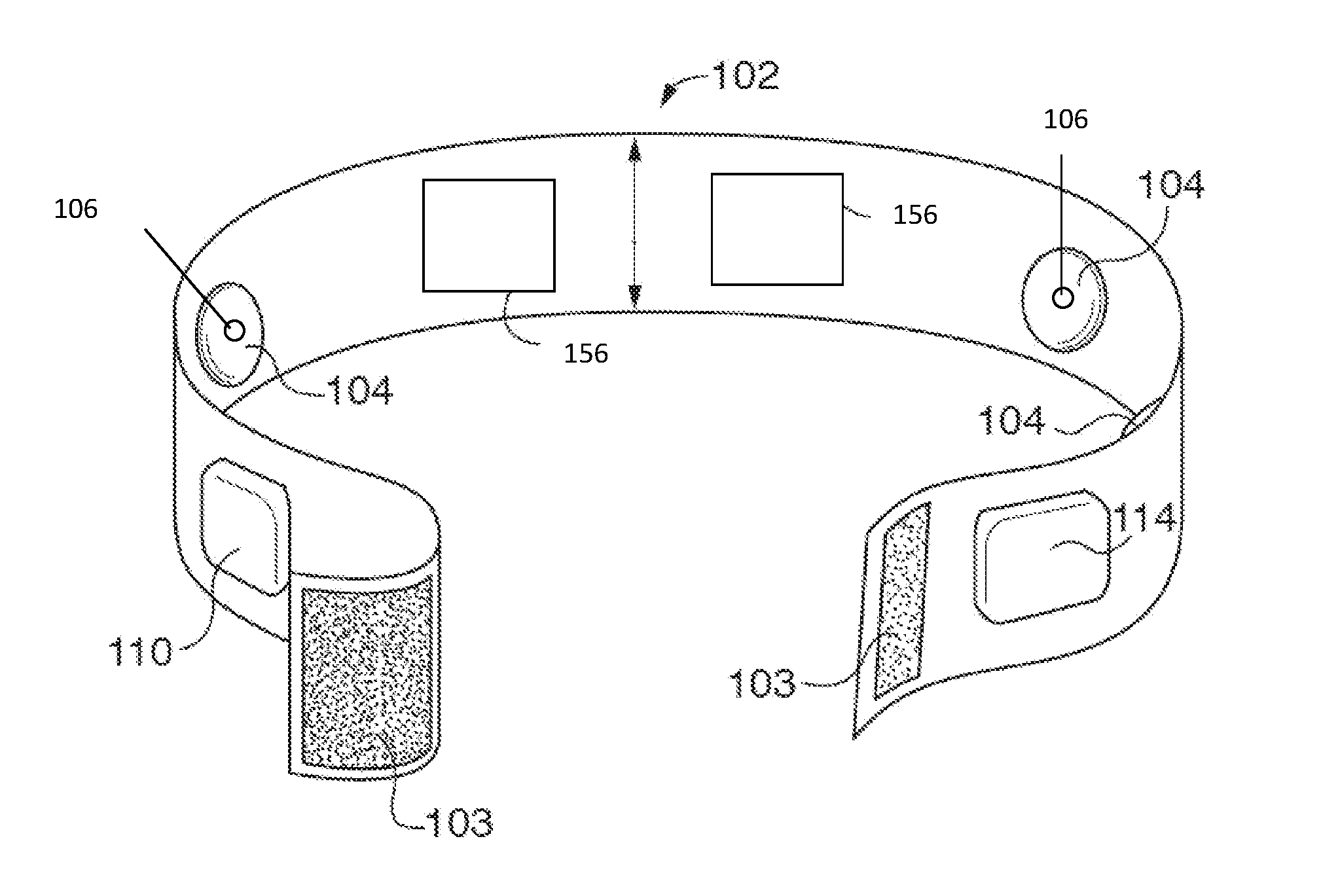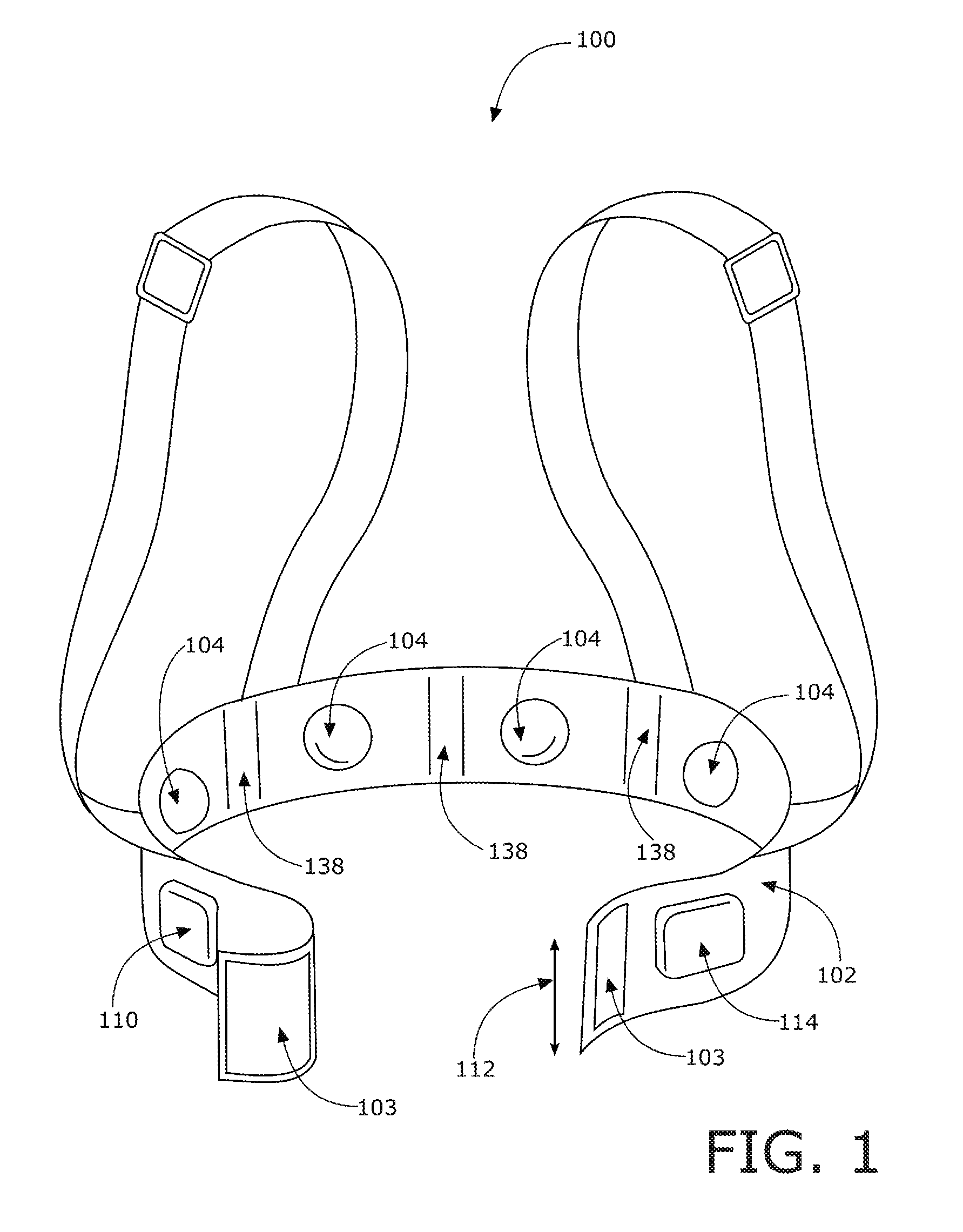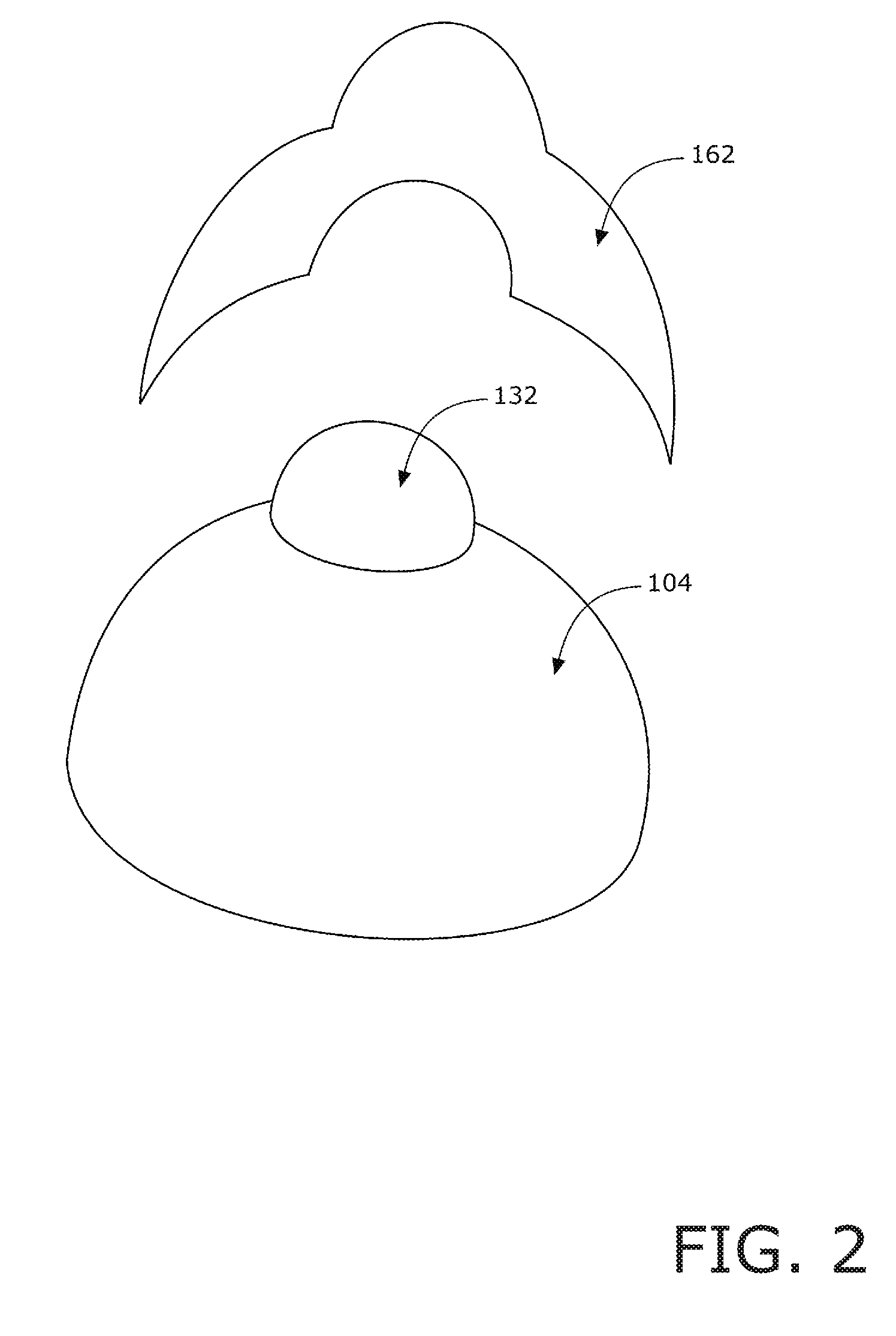Tactile Input for Improving Physical Movement
a technology of tactile input and movement, applied in the human body, can solve the problems of automatic and unconscious impaired coordination and quality of muscle activity, and faulty ingrained movement patterns, so as to facilitate the improvement of the quality of the contraction, improve the sense/awareness of the intended muscle group, and improve the stability of the trunk
- Summary
- Abstract
- Description
- Claims
- Application Information
AI Technical Summary
Benefits of technology
Problems solved by technology
Method used
Image
Examples
Embodiment Construction
[0063]Referring first to FIG. 1, according to at least one aspect of the invention, there is shown an apparatus 100 for providing sensible / tactile input to enable a person to control and improve contraction of muscles during daily activities, including exercising, by stimulating the mechanoreceptors with respect to a specific muscle or muscle group. The apparatus 100 is associated with a belt 102 (in the present disclosure “belt” and “body wrapping” are interchangeable) worn around the body (not shown). The apparatus 100 includes a plurality of projections 104 associated with the belt 102. The projections 104 may each be blunt, for example, being substantially semispherical as depicted, spheroid or other. In some preferred embodiments, the projections are 2.5″ in maximum diameter domes (also referred to as semi-spherical projections), however, the range of the dome maximum diameter can range from 0.25″ to 5.0″ and still be effective in providing tactile input for certain users. The ...
PUM
 Login to View More
Login to View More Abstract
Description
Claims
Application Information
 Login to View More
Login to View More - R&D
- Intellectual Property
- Life Sciences
- Materials
- Tech Scout
- Unparalleled Data Quality
- Higher Quality Content
- 60% Fewer Hallucinations
Browse by: Latest US Patents, China's latest patents, Technical Efficacy Thesaurus, Application Domain, Technology Topic, Popular Technical Reports.
© 2025 PatSnap. All rights reserved.Legal|Privacy policy|Modern Slavery Act Transparency Statement|Sitemap|About US| Contact US: help@patsnap.com



